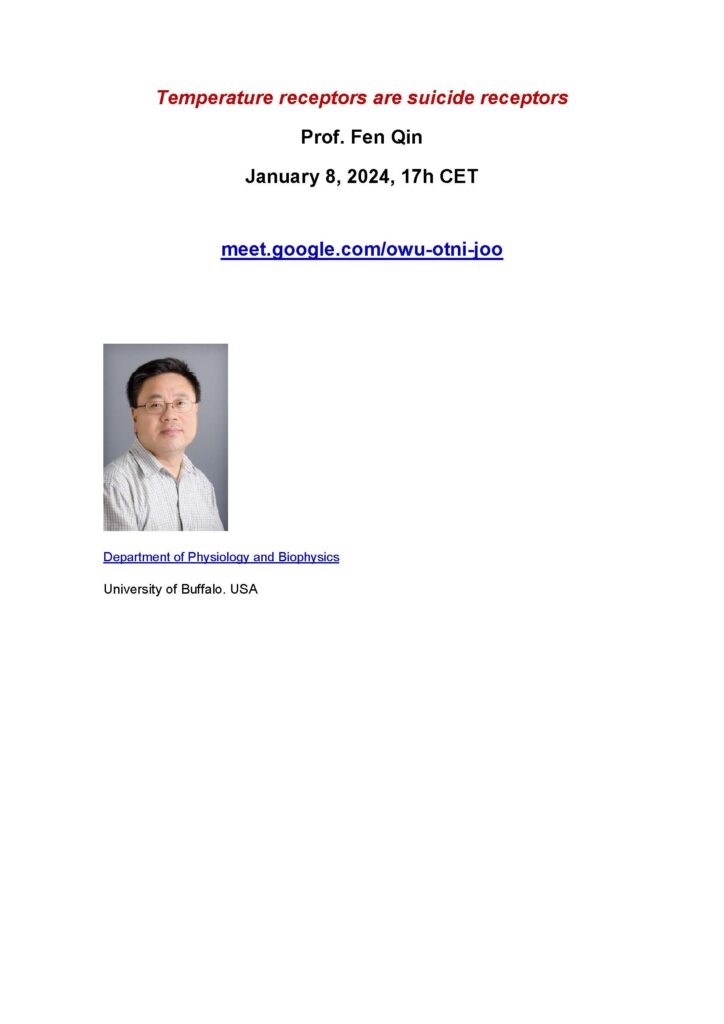La Red Española de Canales Iónicos (RECI) nos comunica el webinar del Profesor Feng Qin titulado “Temperature receptors are suicide receptors” que se llevará a cabo a través de Google meet (https://meet.google.com/xvo-rgcx-fpa) mañana lunes 8 de enero a las 17h ya que no se pudo reprogramar en 2023.
El profesor Feng Qin pertenece al departamento de Fisiología y Biofísica de la Universidad de Bu (USA).
A continuación, se incluye una breve referencia sobre el campo de trabajo del profesor Qin:
“He studies structural functions of ion channels involved in pain and temperature sensation. He employs a variety of techniques spanning multiple disciplines including electrophysiology, molecular biology, biophysics, biochemistry and structural & computational biology. He studies these ion channels both in vitro in living cells and in situ by purifying and inserting them into artificially made liposomes. They see these channels as miniature machines, with each part posing a distinct function. Their bread and butter consists of using patch clamp (which lets us monitor ion channel functioning) with mutagenesis to pinpoint the functional role behind each structural part. They are also using cryo-EM to visualize the different structural forms these channels adopt under different temperatures. They then map these distinct conformations to their respective functions by using luminescence energy transfer (LRET), an optical technique capable of discerning individual moving parts of the protein, in conjunction with molecular dynamics (MD) simulations. At the cellular level they are interested in the signaling cascade that regulates channel activity. An example of this is an experiment is the used fluorescence microscopy (TIRF) in conjunction with patch clamp. TIRF microscopy allowed to monitor fluctuating PIP2 levels within the plasma membrane whereas the patch clamp allowed us to monitor TRPV1 functionality. The experiment allowed us to observe a causal relationship, wherein a decrease in PIP2 concentration led to TRPV1 desensitization.
Their lab places a strong focus on building new tools. For example, they recently developed a fast temperature clamp using infrared laser diodes. This contraption permits ultra-fast local heating of single cells and has proven vital to our study of thermal channels. They also possess a custom-built microscopy-based LRET detection system (with a pulsed ND:YAG laser) for spectroscopic studies. They have also developed a suite of algorithms for interpreting data from single-channel recording, a type of measurement that supplies rich information regarding channel functioning. This software, known as QuB, is world-renowned and used by ion channel researchers worldwide. Students will not only can use state-of-the-art equipment to conduct cutting-edge biomedical research but will also have the opportunity to gain deeper insight as to the technical aspects behind the tools they use.”


